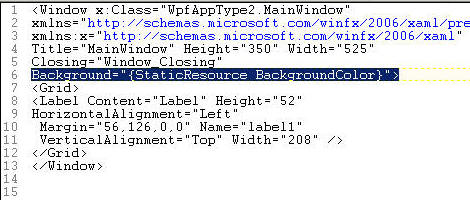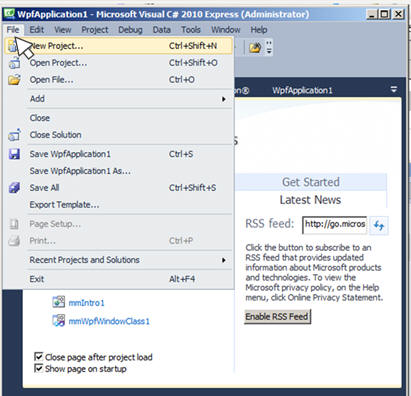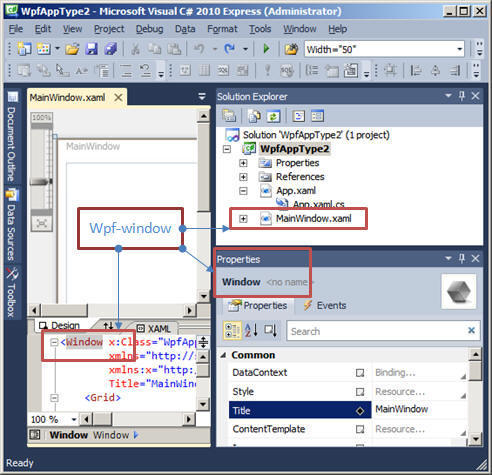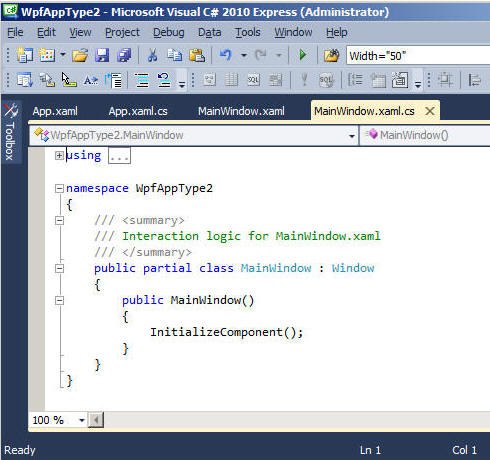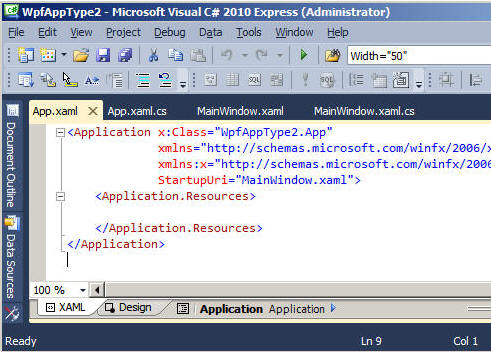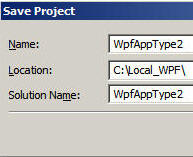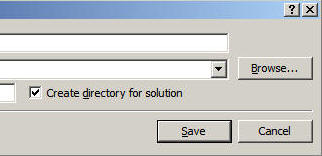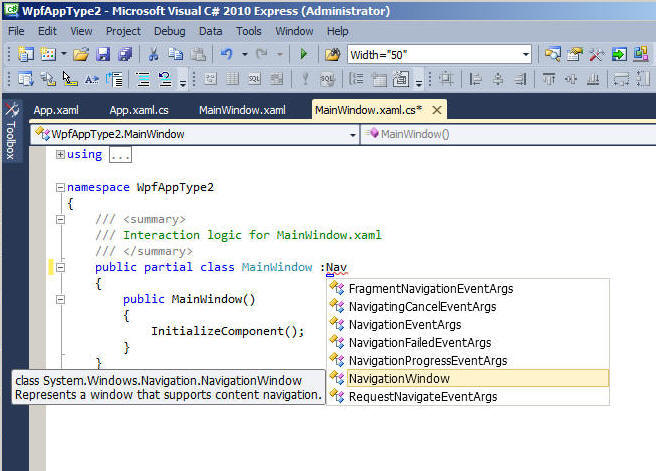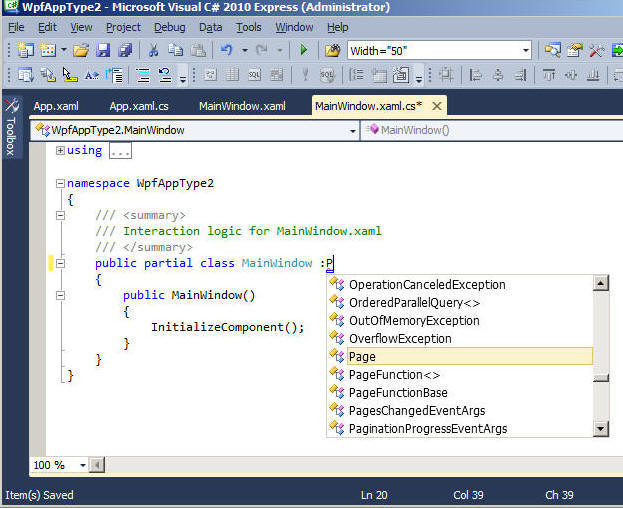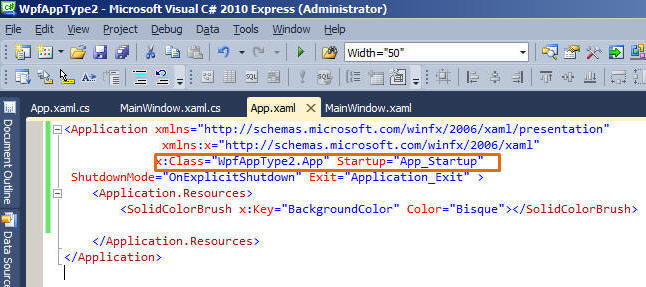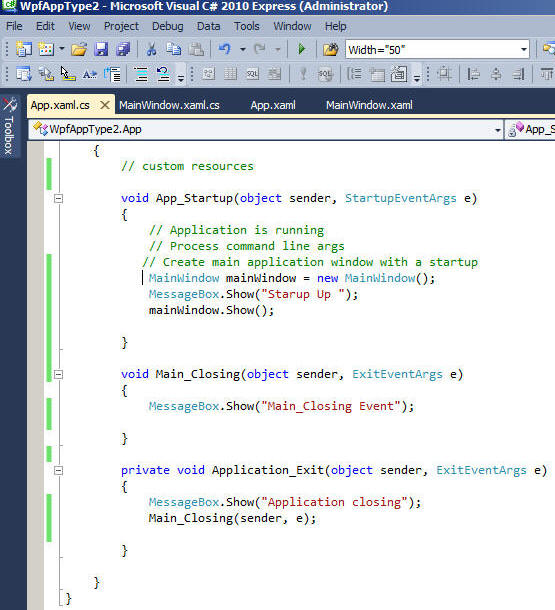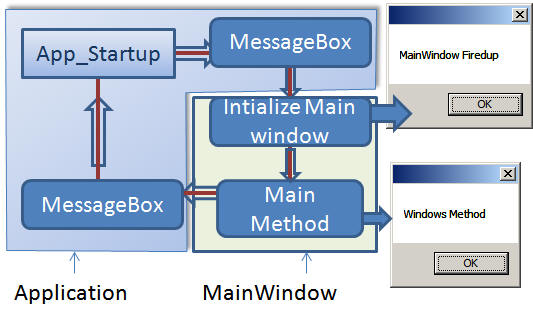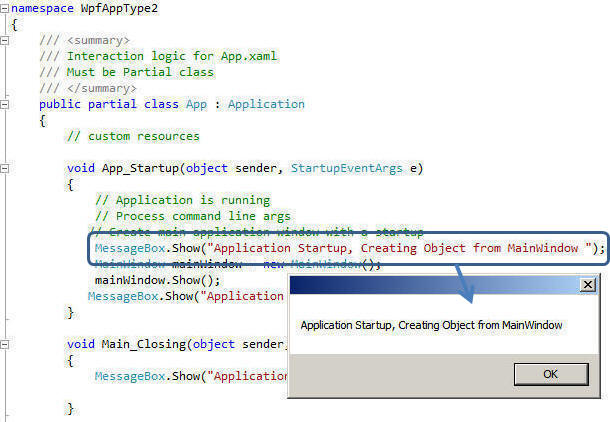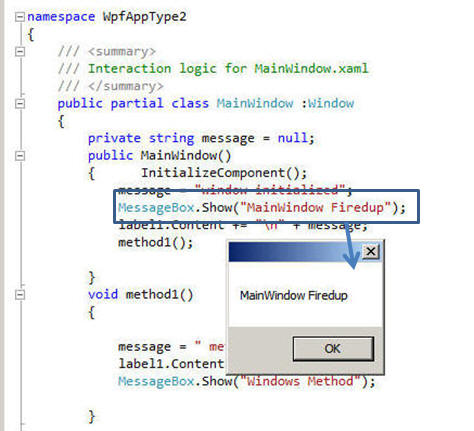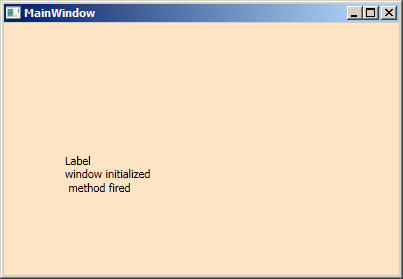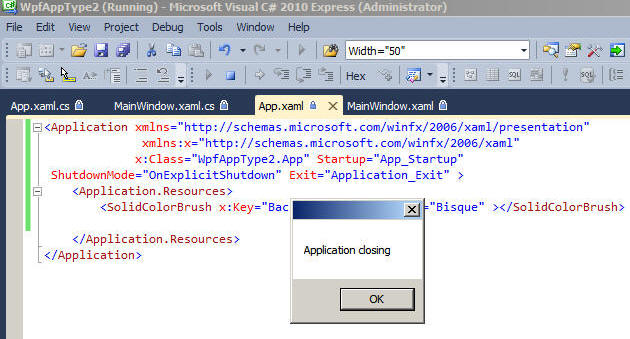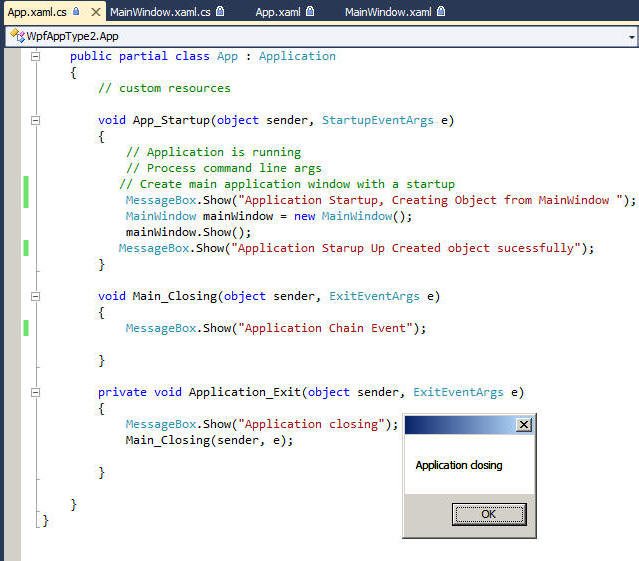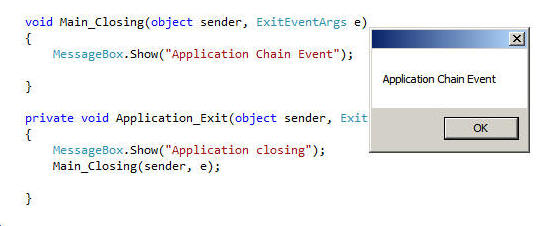WpfAppType2 ( WPF )
Objectives:
- Using Startup Method.
- Distinction between Startup and StarupURI
- StartupUri in App.xaml, will load a window declaratively from a URI.
- If you need access to the main window during startup, you need to manually create a new window object from your Startup event handler.
- Static
a) default
b) Application.Resources
c) Choosing Static Windows background
- Resources XAML:
- <Application.Resources>
<SolidColorBrush x:Key="BackgroundColor" Color="Bisque"></SolidColorBrush>
- Code :
Application is a class that encapsulates WPF application-specific functionality, including the following:
•Application Lifetime Related : Activated, Current, Deactivated, DispatcherUnhandledException, Exit, Run, SessionEnding, Shutdown, ShutdownMode, Startup.
•Application-Scope like Window, Property, and Resource Management: FindResource, GetContentStream, GetResourceStream, LoadComponent, MainWindow, Properties, Resources, StartupUri, Windows.
•Command-Line Parameter and Exit Code Processing: Application.Startup, Application.Exit, Application.Shutdown.
•Navigation: FragmentNavigation, LoadCompleted, Navigated, Navigating, NavigationProgress, NavigationStopped, NavigationFailed, SetCookie, GetCookie.
Step:1 Create a New project
Project Created by default, contains "WPF -Windows-Application", which is very similar to "Windows Form Application" . This Template also provide few other flavors, and we we going to explore one at a time`. To date, WPF-Windows-Application is a fare alternate choice to the classical Windows-Form-Application , with XAML coding and conventional coding which marks it's separation from windows-form-application.
Code-Behind-MainWindow
App.xaml: Reference point of application resources.
Code behind of App.xmal
Step:2 Life and regulation of Window and it's options. You may convert into a Navigational or Page Application type.
Step:3 Edit Code ina) App.xaml: App.xaml.1.txt to App.xaml.2.txt
b) Edit App.xaml.cs
Step:4 Runtime Viewsa) App_StartUp
Window is displayed
Since two "Message-Boxes" in "App_Startup" padded the object created from "MainWindow", the cursor returns to the Application Pane-Module and displays the second message.
b) The events involved in Closing "MainWindow". First the local object will tend to close and
The illustration below shows how the cursor shifts from "MainWindow" to "Application Class".
Step:5 Notes:


